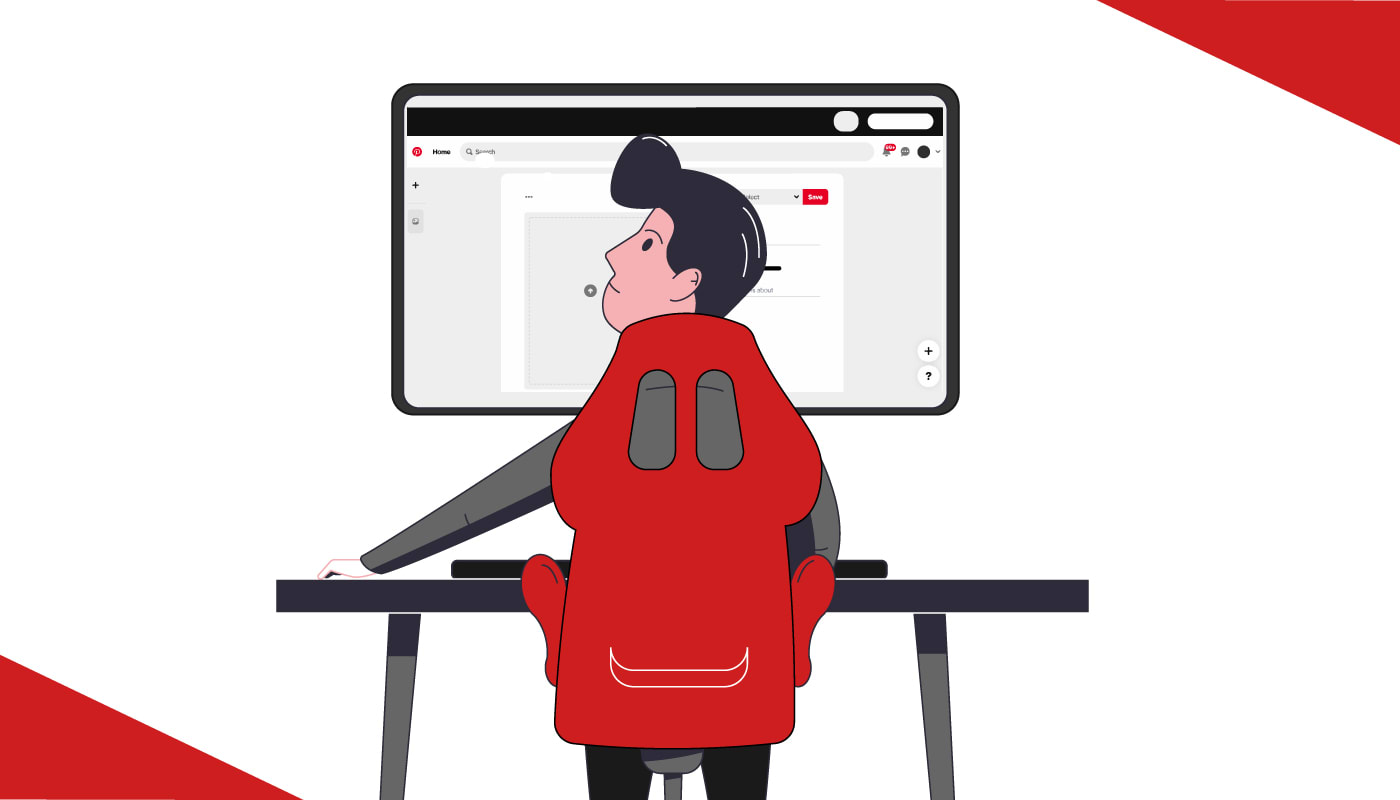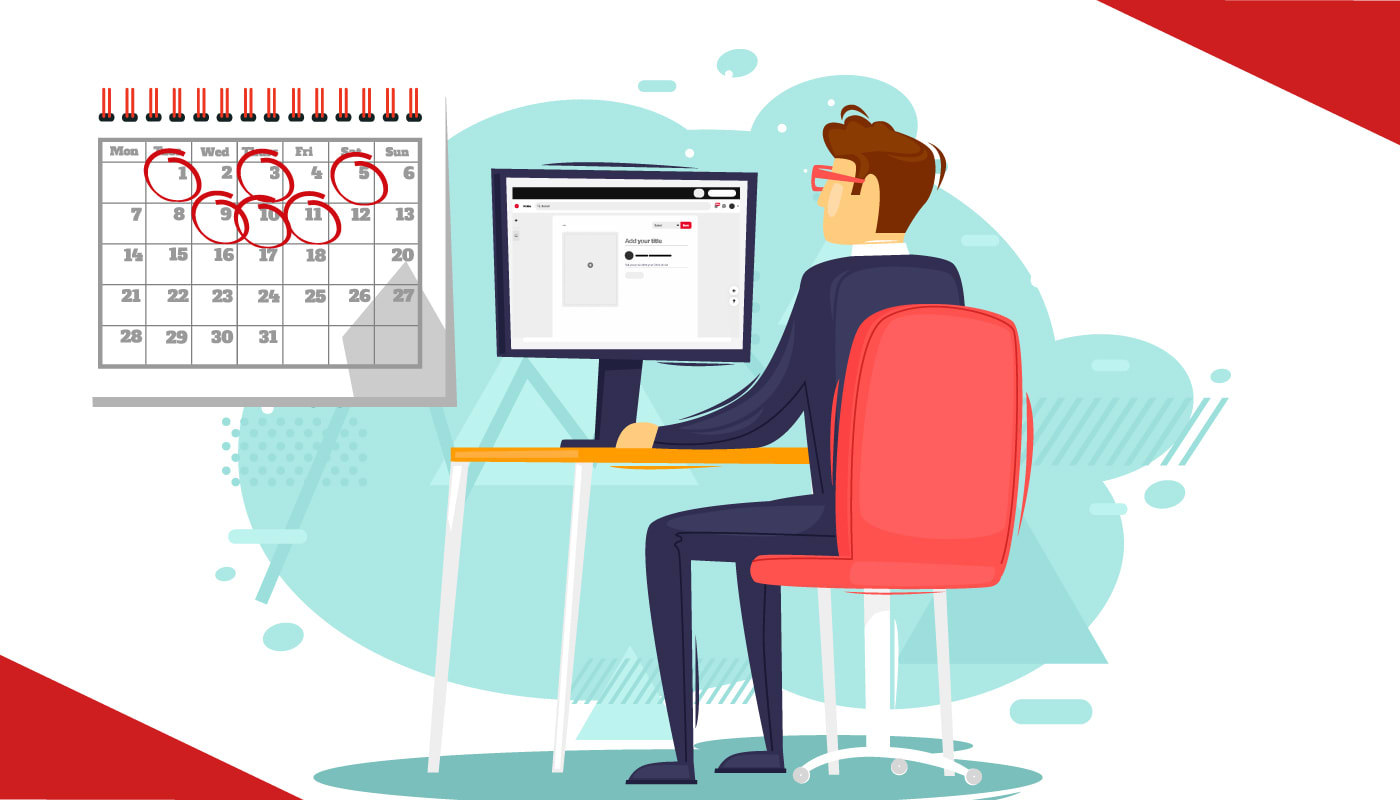You’ve no doubt used Pinterest to find DIY hacks and recipes, but have you ever considered it as another avenue to promote and sell your merch? Read on to find out more about Selling Merch on Pinterest.
Instagram and Facebook are obvious social platforms to use for promotion, but Pinterest’s layout allows you to maximize your content and brand in different ways.
Once you become familiar with Pinterest and all of its features, you’ll quickly discover what audiences are best suited for your merch.
Do you sell baseball themed products? Target sportswear related tags. Create baseball boards around different teams/players.
Have a shop for bookworms? Search what tags are most used by readers to target people interested in new books and other aesthetic purposes.
Using Pinterest for your shop will unlock a whole new customer base that wants visual and informative content. According to a study of Pinterest users, 60 percent of users start product research and form ideas on what to buy using the site.
This is a platform that you should be taking advantage of, and here’s how you can best do that for your merch brand.

Understanding Pinterest
If you’ve never really used Pinterest before, it can just come off as a clean looking site with a lot of organized images and aesthetics. But what does it all mean, exactly?
Pinterest is essentially an enormous bulletin board that houses everyone’s content across the web. What you would normally call a post on any other platform is referred to as a “pin” there.
A pin can consist of an image, video, or text where you can add links to direct people to your shop or socials if needed. Attach relevant tags to your pins so people who search similar keywords will be able to find them more easily.
On Pinterest, people are referred to as pinners, just as they would be referred to as Instagrammers on Instagram.
A Pinterest board, on the other hand, is a collection of different pins that are related to a certain theme or topic: fall DIY, gymnastics, theme parks, the list goes on and on. If someone sees a pin they like, they can add it to their respected boards to refer back to at any time.
Explore and Shop.
Another great thing about Pinterest is they offer two different tabs for search requests: Explore and Shop.
If someone is just looking for creative ideas and input, the Explore tab provides plenty of inspiration. For consumers (and what you as a shop owner want to focus on) the Shop tab gives users different product options, with those most related to their search history at the top.
If you want to optimize selling merch on Pinterest for your business, you need to set up a business account. You can merge it with your personal account or create a completely separate account here.
You can categorize your business as a marketplace in general regard to your shop, or be more specific and label yourself as a blogger or influencer if you fall in those categories.
Link your Spreadshop to your Pinterest so people can find your shop and you can create pins easily from your shop content. You can also link your Youtube and Instagram accounts to track stats through those sites.
If you want to track website analytics from your Spreadshop, click the “claim” option on your profile. Any pins that come from a claimed account will automatically include your profile photo and a follow button for better visibility.
Once you have your account up and running, you can start creating pins and boards. Become familiar with the platform.
There’s so much to explore.

Creative Engaging Content
Since Pinterest is such a visual medium, you’ve got to be creating original and attractive content that’s going to stand out amongst thousands of related pins.
85 percent of pinners said they were more interested in visual elements than text in a Pinterest study.
You can use stock merch photos from Spreadshop for some of your pins, but that’s only going to take you so far. People want to see what your merch looks like on people in the real world.
Take the time to take some high quality photos that fit in with the Pinterest aesthetic. Make sure that these images are vertical since 85 percent of Pinterest users interact on mobile devices. Shoot for a 2:3 aspect ratio.
Align these images with the theme or purpose of your shop.
If your merch is for avid readers, like the example from before, shoot subjects reading books in appropriate settings: in the park, at the library, at home. If you have a book club themed podcast, make sure the books in the photos are ones you have episodes or will be discussing on the pod soon so you can cross promote your shop and podcast.
People want to feel like their interests are best represented by what you’re selling, so play into that with your images.
If your whole thing is rocking a retro vibe, wear 80s trends with your merch – acid wash jeans, leg warmers, scrunchies – and put yourself in a fun setting like a record store or a roller rink (if you can find one). Here’s an 80s board for inspiration.
Themes
Coordinating a theme within your pins will make your merch look better and set you up as a trusted source for interested buyers.
Continue to tell a story through text and other image elements.
Use action words and throw in puns or popular quotes to attract attention. Add relevant emojis and feature promotion codes and shop updates.
If you want your pins to be even more branded, consider adding your shop logo into a corner of the image. Make it small but distinct so people will remember it’s your pin when they see it on their boards.
The more you’re on Pinterest, the better you’ll get at selling merch on Pinterest.

Be Active
In order to get the most out of selling merch on Pinterest, you should ideally be posting at least once a day.
It sounds like a lot, but being on the app more and more will make it easier. You can even use a scheduling service like Hootsuite if you don’t have the time in your day-to-day life.
Posting at least once a day will ensure that more users see your content on a regular basis. And this doesn’t have to be brand new content each time, either. Recycle images you’ve taken the time to prepare beforehand every now and then while changing captions and messaging to be relevant to what’s going on with your and your shop at the moment.
And don’t forget to check your Audience Insights. See what days or times your content is getting the most engagement.
You want to make sure you’re posting when your audience is most active on Pinterest.
Have fun scrolling Pinterest and adding images to your boards. It’s not as important or beneficial as posting pins, but it will give your profile an evergreen feel and prove to people that you are active on the platform.
Trends
Keep up with trends that appeal to what your merch represents. If you feel comfortable, do tik tok dances wearing your merch. Launch a podcast and promote that if you notice there’s interest in learning more about what you’re selling.
Talk about craft hacks if you sell merch for crafters, discuss your fantasy football teams with friends if you have a sports themed shop.
You want to be targeting your audience through different mediums; it’s just promoting your shop in a different kind of way than posting merch photos all the time.
Even have your boards curated to certain aspects of your merch.
Maybe they’re general mood boards related to the theme of your shop, or ones that are more specific. Have one that features customers wearing your products. Encourage them to take photos of themselves by offering discounts or entry into giveaways to collect these images.
It’s really all about finding different ways to post about your merch and doing it regularly – that’s when you’ll start to see results.

Grow Your Audience
Once you’ve found your demographic and developed a strong relationship with them, you can start to expand your reach.
Target pinners specifically with ads by using keywords, interests, location, and other demographics when regular pinning will only get you so far.
With this specific form of advertising, you can interact with people who are engaging with similar content, have engaged with your pins, and even those that have clicked on your shop link in your pins or profile.
If you want to learn more about advertising on Pinterest, Hootsuite has a complete guide on how to use Pinterest ads that will help set you up for success.
There’s always SEO optimization to keep in mind, too. You’re already doing this with the keywords you are using, but there are other details in mind to help boost your pin ranking.
Beyond regular pins, Pinterest also has a feature called rich pins: pins with extra detail. These come in the form of an app, product, recipe, or article.
Save pins to your boards regularly and be generally active on the platform. And try to avoid duplicating content as much if you can. The more fresh content the better.
It’s important to get a head start on all of your content from the beginning, too. When you’re taking your product images that you’re going to use for pins, make sure you’re optimizing different angles and settings while you’re in the process.
This will give you more to work with from the jump and save you time when you’re scheduling out your pins weeks or months in advance.
By making your pins creative and specific to your fellow pinners, your merch becomes more appealing. What’s attractive is what’s going to generate interest and increase sales for your merch brand in the long run.
Shop with me
https://www.spreadshirt.com/shop/design/306501001+1039139690+mami+mug-D60b92a866426c262993de418?sellable=OwZBEao1xBTgqlQ2wZgo-31-32